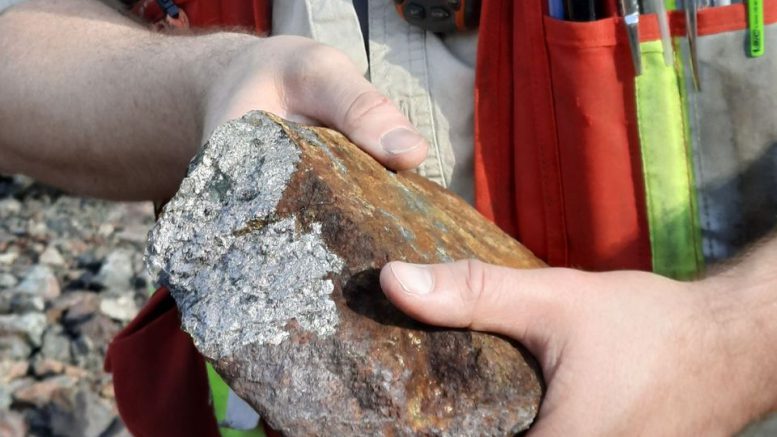Magna Mining (TSXV: NICU) says the first holes drilled at its Crean Hill mine, part of its recently acquired Denison project in Ontario’s Sudbury Basin, has returned the kind of mineralized sulphide material it is looking for.
The company also announced it’s proceeding with a preliminary economic assessment, due to be completed early in the second quarter of 2023.
As expected, each of the first three holes at the prospect intersected mineralization, including massive sulphides in drill hole MCR-22-003.
Magna’s initial drill program at Crean Hill targets areas within the current that will be considered for advanced exploration and potential bulk sampling.
The holes have confirmed the accuracy of the historical stope models, geological models, and overall quality of resources remaining at Crean Hill.
Hole MCR-22-003 was drilled below and adjacent to historically mined stopes and confirmed that the mineralization continues down-dip and along strike to the southwest. It targeted the 101 Zone, associated with a breccia system trending southwest from the main Sudbury Igneous Complex (SIC) contact mineralization into the footwall rocks.
In a press release, Magna notes that Sudbury footwall orebodies are commonly hosted within breccia systems and often are elevated in copper and PGM mineralization relative to typical SIC contact mineralization.
The drill hole intersected about 70 metres of footwall breccia, with local disseminated to stringer mineralization throughout. It includes massive sulphide mineralization over 1.7 metres from 168.1 metres depth and 5.7 metres from 173.1 metres downhole. Assay results remain pending.
Additional drilling will test further extensions of the 101 Zone.
The first two holes targeted near-surface copper-nickel SIC contact-style mineralization within the current open pit resource.
Magna acquired Denison with the $16-million purchase of Lonmin Canada in August. Denison operated as Crean Hill for Inco for about 80 years in three periods from 1906 to 2002. Vale (NYSE: VALE) ran the site as a joint venture with Lonmin before they closed the mine in 2017.
Next steps
Magna expects to complete about 2,000 metres of drilling before the Christmas break and resume diamond drilling in January.
Next year, the company is budgeting 12,000 to 15,000 metres of drilling that will be focused on expanding the resource and testing new exploration targets in the footwall of the SIC, as well as contact nickel and copper targets east of the current resource.
The preliminary economic assessment will be used to demonstrate the potential economics of the Denison project, and assess potential synergies with the company’s Shakespeare project. It will also make recommendations for additional work which will support a future pre-feasibility study.
“Our initial drilling has intersected massive sulphide mineralization, as expected, demonstrating the quality of the mineral resources remaining at Crean Hill,” said Magna’s senior VP for technical services, Dave King, in a release. “The initial 1,500-2,000-metre drilling program provides technical information to support the PEA and material for metallurgical or other required testing as our technical studies progress.”
Magna’s Shakespeare project, 37 km west of Denison, also hosts a past-producing nickel-copper-platinum group metals mine. It has an indicated resource of 20.3 million tonnes grading 0.33% nickel, 0.36% copper, 0.32 gram platinum per tonne, 0.35 gram palladium and 0.19 gram gold. Magna has permits for the construction of a 4,500-tonne-per-day mill and the re-start of open pit mining at Shakespeare.
Earlier in November, Magna announced an initial resource for Denison. The indicated open-pit resource is 16.8 million tonnes grading 0.53% nickel, 0.49% copper, and 0.02% cobalt (1.08% nickel equivalent). It also has 0.48 gram platinum, 0.37 gram palladium and 0.25 gram gold per tonne.
The underground indicated resource is 14.5 million tonnes grading 0.56% nickel, 0.84% copper and 0.03% cobalt (2.07% nickel equivalent). It also has 0.88 gram platinum, 1.02 gram palladium and 0.54 gram gold.
The company’s Toronto-quoted shares have gained more than 75% over the past three months and up 16% over the 12-month period to 51¢, ranging between 23.5¢ and 62¢ over the latter period. It has a market cap of $75 million.


Be the first to comment on "Magna Mining finds what it’s looking for with first Crean Hill drilling"